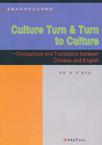吉林大学研究生立项教材 Culture Turn & Turn to Culture
出版时间:2010-12 出版社:吉林大学出版社 作者:孙萍,綦天柱 著 页数:237
Tag标签:无
内容概要
这部Culture Turn&Turn to Culture是用英文撰写的,其雏形是本书作者为英语专业硕士研究生“翻译理论与实践课”编写的讲义,在几年的使用中,得到了不断的补充、修改、更新和完善,力争与时俱进,最终成型。 本书主要涵盖四个方面的内容:一、文化和语言之间的关系(其中包括文化概论、文化与语言之间的关系);二、翻译概论(其中包括翻译的定义、翻译的过程和翻译的常用策略等);三、英汉语言文化比较研究与翻译(其中包括英汉语音比较及英源音译词研究、英汉词汇比较与翻译、英汉习语比较与翻译、英汉句子比较与翻译、英汉篇章比较与翻译);四、中西译史简介(其中包括中国翻译史简介、西方翻译史简介)。 本书的特色主要体现在以下几个方面: 一、注重引导使用者注意英汉两种语言文化方面的异同,尤其注重对英汉不同的文化背景、不同的思维方式和不同的语言表达习惯进行比较研究,寻找异同,其根本目的是帮助使用者提高翻译能力。 二、注重选材的科学性和研究价值,尽力做到英译汉、汉译英同行并举。 三、许多例句或段落乃至篇章均出自作者已经出版并获奖的译著或名家的名篇,并对翻译中遇到的难点和要点进行解析和指津,形成宝贵的第一手资料。 四、书中融入了“中西译史简介”,这是一种全新的尝试。搞翻译需要对中外译史有个大致的了解,以便对翻译事业的发展有个总体的把握,对翻译在历史和现实中的重要作用有个正确的认识。
作者简介
孙萍,女,1952年9月生,吉林省通化市人,1975年毕业于吉林大学外国语学院英语专业,现任吉林大学公共外语教育学院教授、硕士生导师;中国翻译工作者协会会员。主要研究方向:中英语言文化对比研究与翻译。近年来出版专著《实用英汉翻译新法》、《实用英汉翻译——技巧与实践》、《英汉翻译导论》、《文化视域下英汉语言文学比较研究与翻译》;译著《大瑟尔》、《特意记着》、《柯利希的安宁岁月》、《谋杀者的时代》、《朗文讲透美国经典名著》(第三册)、《朗文精读美国名篇故事》(第三册)、《英语知道28篇美国小说》、《英语知道56个为什么》;发表相关研究方向的论文50余篇。
书籍目录
PART ONE Chapter 1 Conspectus of Culture 1.1 What Is Culture? 1.2 Cultural Convergence and Divergence 1.3 Relationship Between Culture and Language Chapter 2 Main Differences Between the Two Cultures 2.1 National and Cultural Psychology 2.2 Esthetic Standards 2.3 Different Associations 2.4 Ways of Thinking 2.5 Other Differences in Culture PART TWO Chapter 3 The Conspectus of Translation 3.1 Definition of Translation 3.2 Characteristic Features of Translation 3.3 Principles Criteria of Translation Chapter 4 Process of Translation 4.1 Comprehending 4.2 Expressing 4.3 Proofreading Chapter 5 Strategies for Translation 5.1 Literal Translation and Idiomatic Translation 5.2 Domesticating Translation 5.3 Foreignizing Translation 5.4 Trend from Domesticating to Foreignizing PART THREE Chapter 6 E-C Sound Comparison & English Originated Transliterated Words 6.1 E-C Sound Comparison 6.2 The Formation of English Originated Transliterated Words and the Trend of Hanization Chapter 7 E-C Words Comparison and Translation 7.1 The formation of Chinese and English Words 7.2 Differences in Word Meaning 7.3 Word Translation Chapter 8 E-C Idioms Comparison and Translation 8.1 Cultural Characteristic Features of Idioms 8.2 Cultural Divergences Reflected in Idioms 8.3 The Translation of Idioms Chapter 9 E-C Sentence Comparison and Translation 9.1 Sentence Category and Type in the Two Languages 9.2 English and Chinese Sentence Structure Chapter 10 E-C Discourse Comparison and Translation 10.1 English Discourse Structure 10.2 Chinese Discourse Structure 10.3 Translation of the English Discourse Chapter 11 E-C Writing Style Comparison and Translation 11.1 Features of Practical Writing and Its Translation 11.2 Features of Argumentative Writing and Its Translation 11.3 Features of News and Its Translation 11.4 Features of Novel and Prose and Their Translation PART FOUR Chapter 12 A Brief Introduction to China's Translation History 12.1 Translation of Buddhist Sutra 12.2 Translation of Science and Technology 12.3 Translation of Western Natural and Social Sciences 12.4 Translation after the Founding of New China 12.5 Translation Theory and Thought in Each Period of China's Translation History Chapter 13 A Brief Introduction to Western Translation History 13.1 Translation in Ancient Times 13.2 Translation in the Middle Ages 13.3 Translation in the Renaissance 13.4 Translation in Modern Times 13.5 Different Schools and Their Theories Bibliography
章节摘录
Language is not a culture-free code, distinct from the way people think and behave, but,rather,it plays a major role in the perpetuation of culture,particular- ly.in its printed form... Language is intimately linked not only to the culture that is and the culture that was, but also to the culture of the imagination that governs peoples decisions and actions far more than we may think. This view can account for the fact that language and culture have evolved together andhave been mutually dependent throughout history. The rise of civilization and the develop-ment of writing exhibit the same kind of mutual interdependence. Neither of them can ex-ist nor develop without the other. It is well accepted that language is not only a scientific system of linguistic symbols,but also a socio-cultural activity. Language and its cultural influence are exemplified in thetheoretical formulations of the Sapir-Whorf hypothesis, which in essence states that lan-guage is a guide to "social reality". This hypothesis implies that language is not simply ameans of reporting experience but,more important,it is a way of defining experience. Sapirwrites.
图书封面
图书标签Tags
无
评论、评分、阅读与下载
吉林大学研究生立项教材 Culture Turn & Turn to Culture PDF格式下载
用户评论 (总计0条)
推荐图书
- (风尚HiFi2CD)天籁传奇
- (4CD+1DVD)莫扎特效应 安抚心情 胎教音乐
- (风尚HiFi2CD)惊魂DJ-中文版
- 教师备课参考
- 博达教师用书·教师备课参考
- 和谐社会视角下的高校后勤管理研究
- 好课是怎样炼成的
- 沟通道德教育论
- 高职院校发展的实践探索
- 高校辅导员工作长效机制建设研究
- 高等学校军事教程
- 当代大学生就业指导与创业教育新论
- 大学生音乐欣赏
- 大学生体育与健康
- 大学生军事教程
- 创新教育学
- (风尚HiFi2CD)民歌监听王
- 创新教程高考总复习
- 创新教程高二新课标同步探究方略1
- 思想品德课优秀教案辑录
- 把普通校办得不普通
- 早教其实很容易
- 好父母成就好孩子
- 大脑的记忆
- 我国武术产业发展策略研究
